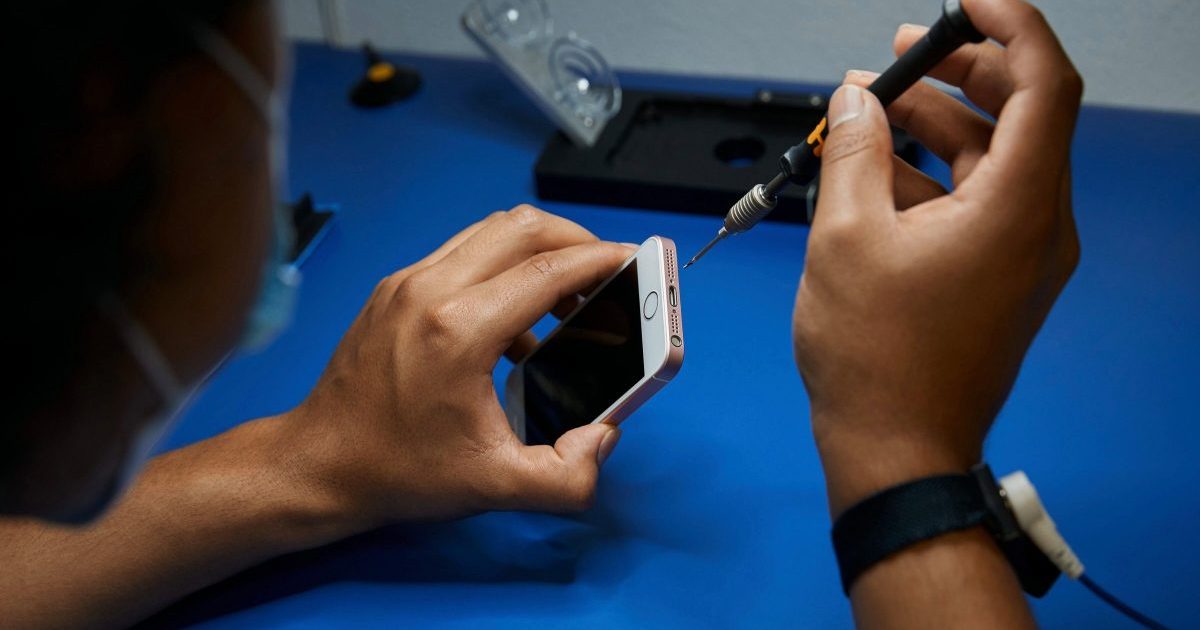FTC has published a new report in which it has called out various tech giants such as Apple and Microsoft for their repair restrictions which can be deemed as anti-competitive. These restrictions mean that customers cannot get repairs done for cheap from just about any workshop and have to rely on authorized repair centers which cost a lot more.
The report calls for tougher laws that force companies to adhere to consumer’s right-to-repair, which would also help small businesses that make a living by repairing these devices. The restrictions from companies like Apple mean that these small businesses have to acquire specialized tools and software, without which the repairs are not possible. This also makes it impossible for tech-savvy consumers to repair their own devices, as the diagnostic tools and components are only available to repair centers.

FTC report details the restrictions that companies like Apple implement when it comes to device repair
The report is based on various discussions and interviews with businesses and consumers. As per the report, Apple has tied many iPhone components to the smartphone’s logic board, which means that they cannot be easily repaired or replaced, even with genuine parts. Many features like TrueTone do not work correctly, as they require specialized for the iPhone to be repaired.
McDonough explained that Apple synchronizes some iPhone parts to the device’s logic board, making the part repairable only by Apple. Although McDonough said she does not believe this practice is widespread in the marketplace, she fears that other manufacturers will engage in a similar practice in the future, making it impossible for individuals and independent repair shops to make certain repairs to electronic devices.
From Apple’s perspective, this is done for a multitude of reasons including security, genuine components, performance, and efficiency. Components like Touch ID and Face ID are critical and allowing them to be replaced by non-genuine components might be a security risk, which is why they are closely tied to the logic board and require specialized tools. Similarly, performance and efficiency benefits come from tight integration of hardware and software, rather than modularization of each component like a PC. This is how thin and fast devices like the iPhone are created, including its fast performing internals.
The report also mentions the battery replacement program, which was offered after the “battery gate” issue in 2018. Due to the cheaper battery replacements that Apple offered, as a way to make up for its unannounced software update that slowed down older iPhones to avoid restarts, a majority of users took advantage of it and did not upgrade to newer iPhones. This demonstrated that cheaper repair helps with the longevity of devices, but it also affects device sales, which goes against the company’s revenue goals.
Apple’s experience with its battery replacement program also suggests that, given a choice between a low-cost repair and buying a new mobile phone, many consumers will opt for the low cost repair. In early 2018, after Apple was found to be slowing down certain models of iPhones in order to compensate for degrading batteries, the company reduced the price of out-ofwarranty battery replacements for iPhone 6 and later models. Under the program, Apple reduced the price for a battery replacement from $79 to $29. Subsequently, in a January 2, 2019 letter to investors, Apple’s CEO explained that iPhone sales were lower than anticipated due to, among other things, “some customers taking advantage of significantly reduced pricing for iPhone battery replacements.”
Of course, Apple has a reputation for supporting its old devices for as long as 5+ years, which is light years ahead of anyone else in the market. “Planned obsolesce” has been proven wrong ever since.
Despite Apple’s intentions to make devices faster and sleeker, the issue with repairs causes a lot of pain for consumers. Due to the restrictions for repairs, a Vermont State Senator said that he was unable to get his iPhone camera repaired in Vermont, which impacted his business since he ran it from his phone.
Multiple Workshop panelists argued that allowing or providing for repair only through authorized repair networks or through the manufacturer can lead to repair taking too long to actually be a feasible option for consumers. Vermont State Senator Pearson, for example, stated that when his iPhone’s camera broke, “according to Apple, nobody in Vermont could fix it. They wanted me to send it to them.” However, because he also runs a consulting business
from his phone, mailing it away for repair would have had the effect of closing his business for a week and so “[i]t was a non-starter.”
The FTC report concludes that it will be pursuing laws and regulations that force companies to adhere to right-to-repair requirements. It will also work on consumer education to let them know what choices they have when it comes to repairing their products. Apple already shows iPhone and MacBook repairability index in France on its product packaging, which might help in informing consumers when it comes to making purchase decisions based on repairability.
From Apple’s perspective, it has expanded its Independent Repair Provider program to 200 countries, which allows repair providers of all sizes to join, free of charge, and gain access to genuine Apple parts, tools, repair manuals which can help them perform the same repairs as the tech giant.
1 comment
Comments are closed.